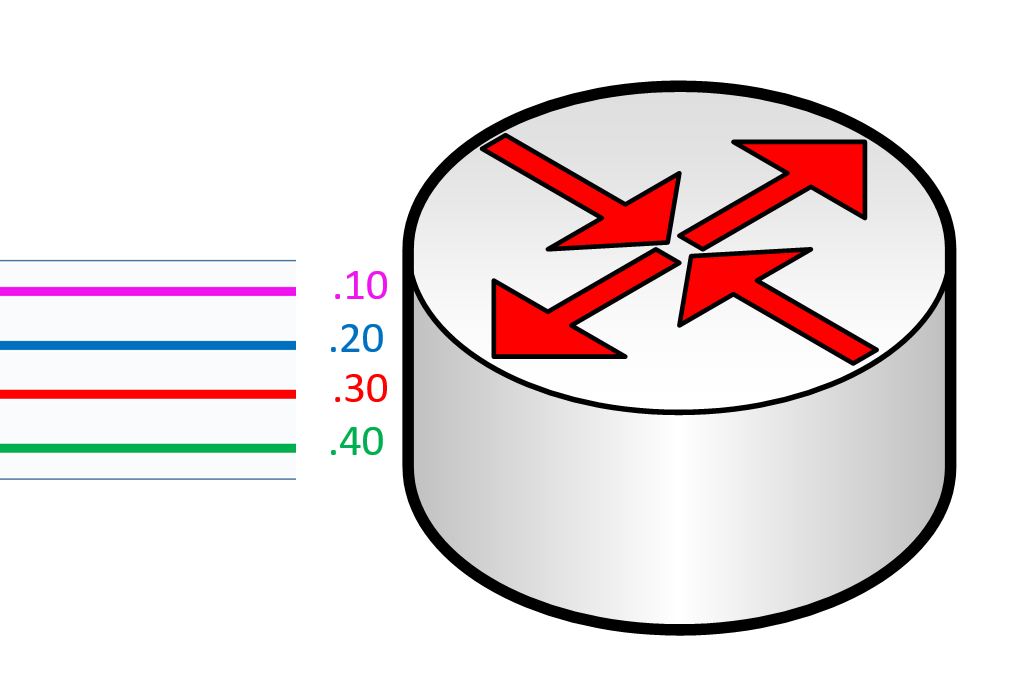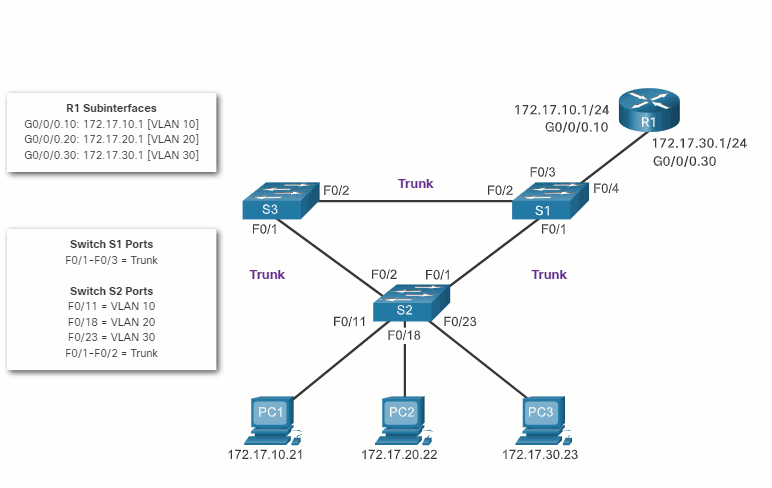


Note: After the ARP process finishes, you may need to click Reset Simulation to see the ICMP process complete. Then PC1 can encapsulate an ICMP echo request with the proper data-link layer information and R1 will route the request to PC3. Then ARP requests and replies between R1 and S3. You should see ARP requests and replies between S1 and R1. Click Capture/Forward to see the steps the ping takes between PC1 and PC3.Ĭ. Step 3: Switch to Simulation mode to monitor pings.ī. Issue the show interface trunk command to verify the interface is configured as a trunk. How can you determine that the interface is a trunk port using the show vlan command?ĭ. Because the router was configured with multiple subinterfaces assigned to different VLANs, the switch port connecting to the router must be configured as a trunk. Verify that the subinterfaces are now active.įrom PC1, ping PC3. Therefore, in order to enable subinterfaces, you must enable the physical interface that they are associated with.ī. Subinterfaces are virtual interfaces that are associated with a physical interface. Use the show ip interface brief command to verify subinterface configuration. Refer to the Address Table and assign the correct IP address to the subinterface.Ī.Set the encapsulation type to 802.1Q and assign VLAN 10 to the subinterface.Step 1: Configure subinterfaces on R1 using the 802.1Q encapsulation. Step 3: Test connectivity between PC1 and PC3.įrom PC1, ping PC3. Issue the show vlan brief command to verify VLAN configuration.ġ default active Fa0/1, Fa0/2, Fa0/3, Fa0/4

Configure interface F0/6 and F0/11 as access ports and assign VLANs.ī. Return to Realtime mode and create VLAN 10 and VLAN 30 on S1.Ī. Click Capture/Forward to see the steps the ping takes between PC1 and PC3.

Switch to Simulation mode by clicking the Simulation tab or pressing Shift+S.ī. Step 2: Switch to Simulation mode to monitor pings.Ī. Because the two PCs are on separate networks and R1 is not configured, the ping fails. When the link lights are green for PC1 and PC3, ping between PC1 and PC3. Wait for switch convergence or click Fast Forward Time a few times. Part 1: Test Connectivity Without Inter-VLAN Routing Finally, you will enable trunking and verify connectivity between VLANs. You will then configure VLANs and inter-VLAN routing. In this activity, you will check for connectivity prior to implementing inter-VLAN routing. Part 4: Test Connectivity with Inter-VLAN Routing Part 1: Test Connectivity without Inter-VLAN Routing


 0 kommentar(er)
0 kommentar(er)
